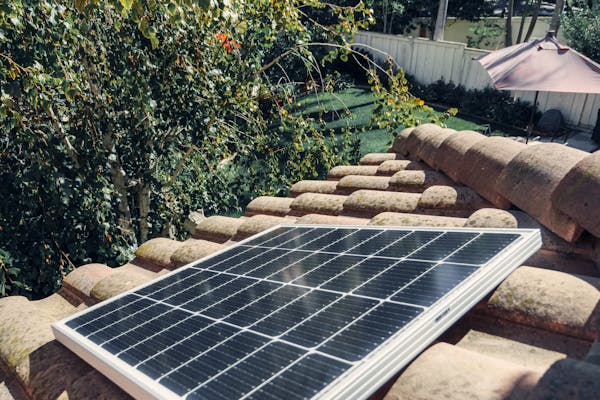
In recent years, the urgency to address environmental challenges such as climate change, pollution, deforestation, and the depletion of natural resources has become more pronounced. As human activity has increasingly impacted ecosystems and weather patterns, the need for sustainable practices and innovative solutions has never been more apparent. Thankfully, technological advancements are stepping in to mitigate these environmental issues. From renewable energy to waste management, technologies that help the environment play a crucial role in fostering a more sustainable and ecologically balanced future.
Technologies That Help The Environment
This article delves into the most impactful technologies that help the environment, exploring their development, application, and potential to reshape our relationship with the planet.
1. Renewable Energy Technologies
One of the most significant ways technology aids the environment is through the development of renewable energy sources. These technologies harness natural resources, such as sunlight, wind, and geothermal heat, to generate power, reducing the reliance on fossil fuels and lowering greenhouse gas emissions.
Solar Energy
Solar power is one of the most widely recognized and utilized renewable energy sources. Photovoltaic (PV) cells convert sunlight directly into electricity, making it a clean and abundant source of power. In recent years, advances in solar panel efficiency, cost reduction, and integration with battery storage have accelerated the global adoption of solar energy.
Impact on the environment:
- Reduces reliance on fossil fuels
- Decreases carbon footprint
- Minimizes air and water pollution
Wind Energy
Wind power, another leading renewable energy source, has witnessed substantial growth over the past few decades. Wind turbines convert kinetic energy from the wind into electrical power. Offshore and onshore wind farms have become key players in many countries’ energy portfolios, providing a cleaner alternative to coal and natural gas plants.
Impact on the environment:
- Reduces greenhouse gas emissions
- Requires minimal water resources compared to traditional power plants
- Utilizes less land per energy unit produced
Geothermal Energy
Geothermal energy harnesses heat from beneath the Earth’s surface to generate electricity and provide heating solutions. By tapping into the planet’s internal heat, geothermal power stations offer a constant and renewable energy source that emits significantly less CO2 than traditional fossil fuels.
Impact on the environment:
- Reduces dependence on coal and oil
- Low emissions
- Minimal land usage and environmental disruption
2. Energy Efficiency Technologies
Apart from generating cleaner energy, improving how energy is consumed is essential for minimizing waste and reducing emissions. Energy-efficient technologies help reduce the overall energy demand, lower operational costs, and decrease carbon footprints.
Smart Grids
Smart grids are advanced energy management systems that optimize the distribution and consumption of electricity. By incorporating sensors, automation, and advanced analytics, smart grids can detect inefficiencies and balance supply with demand, preventing overproduction and reducing energy waste.
Impact on the environment:
- Reduces energy waste and increases grid reliability
- Enables better integration of renewable energy sources
- Lowers greenhouse gas emissions
LED Lighting
Light-emitting diodes (LEDs) represent a significant leap in lighting efficiency. LED lights consume up to 90% less energy than traditional incandescent bulbs and last up to 25 times longer. As lighting accounts for a considerable portion of global energy consumption, widespread adoption of LED technology has had a marked environmental benefit.
Impact on the environment:
- Lowers energy consumption
- Reduces CO2 emissions associated with electricity production
- Minimizes waste due to longer lifespan
Energy-efficient Buildings
Green building technologies, such as energy-efficient insulation, heating, ventilation, and air conditioning (HVAC) systems, and energy-efficient appliances, play a crucial role in reducing energy consumption in residential and commercial buildings. Passive design strategies, like natural lighting and ventilation, further reduce the need for energy-intensive systems.
Impact on the environment:
- Reduces the demand for energy
- Lowers emissions from heating and cooling systems
- Decreases water usage in some cases
3. Sustainable Transportation Technologies
The transportation sector is one of the largest contributors to air pollution and greenhouse gas emissions. Technological advancements in sustainable transportation are crucial for reducing this environmental burden.
Electric Vehicles (EVs)
Electric vehicles (EVs) are rapidly becoming mainstream, providing a cleaner alternative to internal combustion engine vehicles. By relying on electricity, especially when charged from renewable sources, EVs help reduce carbon emissions and air pollution.
Impact on the environment:
- Reduces carbon emissions and air pollutants
- Less reliance on oil and gasoline
- Supports renewable energy adoption through integration with smart grids
Public Transit Innovations
Improving the efficiency and accessibility of public transportation systems is another key way to reduce emissions. Electric buses, trains powered by renewable energy, and autonomous ride-sharing services can help reduce the number of private vehicles on the road, thus lowering pollution levels.
Impact on the environment:
- Reduces overall energy consumption per passenger
- Lowers greenhouse gas emissions
- Decreases traffic congestion and pollution
Hydrogen Fuel Cells
Hydrogen fuel cell technology offers a promising future for zero-emission transportation. Hydrogen-powered vehicles generate electricity through a chemical reaction between hydrogen and oxygen, with the only byproduct being water. While still in development, hydrogen fuel cells could revolutionize the transportation industry by offering a sustainable alternative to gasoline and diesel.
Impact on the environment:
- Produces zero harmful emissions
- Can be used in larger vehicles like buses and trucks
- Reduces dependence on fossil fuels
4. Waste Management Technologies
Proper waste management is essential for minimizing pollution, conserving resources, and protecting ecosystems. Innovations in waste management technology are helping to address issues like plastic pollution, electronic waste, and inefficient recycling practices.
Recycling Technologies
Advances in recycling technology are making it easier and more efficient to process materials like plastic, glass, metal, and paper. Automated sorting systems, chemical recycling, and the development of biodegradable alternatives are helping reduce the volume of waste sent to landfills and incinerators.
Impact on the environment:
- Reduces the demand for raw materials
- Lowers energy consumption and emissions associated with production
- Minimizes pollution and landfill use
Waste-to-Energy Technologies
Waste-to-energy (WTE) technologies convert waste materials into usable energy, such as electricity or heat. Incinerating waste under controlled conditions or using anaerobic digestion to break down organic materials can significantly reduce landfill volumes while generating clean energy.
Impact on the environment:
- Reduces landfill waste and associated methane emissions
- Generates renewable energy from otherwise discarded materials
- Minimizes the environmental impact of waste disposal
Plastic Alternatives
Biodegradable and compostable materials are gaining traction as alternatives to conventional plastics, which take centuries to degrade and contribute to ocean pollution. Researchers are developing plant-based plastics, fungi-derived packaging, and algae-based materials that decompose naturally, reducing the environmental impact of single-use products.
Impact on the environment:
- Reduces plastic pollution in oceans and landfills
- Decreases reliance on fossil fuels for plastic production
- Promotes sustainable resource usage
5. Agricultural Technologies
Agriculture is both a cause and a victim of environmental challenges like climate change, deforestation, and water scarcity. Sustainable agricultural technologies aim to address these issues by improving the efficiency of food production while minimizing environmental degradation.
Precision Farming
Precision farming uses data and technology to optimize crop yields and reduce the use of resources like water, fertilizers, and pesticides. Drones, GPS-guided machinery, and soil sensors help farmers monitor crop health, apply inputs precisely, and reduce waste.
Impact on the environment:
- Reduces water and chemical usage
- Lowers soil degradation and nutrient depletion
- Minimizes environmental contamination from pesticides and fertilizers
Vertical Farming
Vertical farming involves growing crops in stacked layers, often in urban settings, using controlled-environment agriculture (CEA). These systems use artificial lighting, climate control, and hydroponics or aeroponics to grow food efficiently with minimal land and water.
Impact on the environment:
- Conserves land and reduces deforestation
- Uses up to 90% less water than traditional farming
- Reduces transportation emissions by growing food closer to urban centers
Organic Farming
Organic farming practices prioritize soil health, biodiversity, and the reduction of chemical inputs. By avoiding synthetic pesticides and fertilizers, organic farms minimize environmental pollution and enhance ecosystem resilience.
Impact on the environment:
- Promotes soil health and carbon sequestration
- Reduces chemical runoff into water bodies
- Supports biodiversity and natural ecosystems
6. Water Conservation Technologies
Water scarcity is a growing concern in many parts of the world. Technologies that help conserve, manage, and purify water resources are critical for ensuring sustainable water use and protecting aquatic ecosystems.
Desalination
Desalination technology converts seawater into freshwater through processes like reverse osmosis. While energy-intensive, advancements in desalination technology are making it more efficient and less reliant on fossil fuels, offering a potential solution to freshwater shortages.
Impact on the environment:
- Provides a reliable source of freshwater
- Reduces the strain on natural water sources
- Supports agricultural and industrial water needs in arid regions
Water Recycling and Reuse
Water recycling technologies treat wastewater for reuse in agricultural, industrial, and even domestic applications. By capturing and reusing water, these systems reduce the demand for freshwater and minimize the amount of wastewater discharged into the environment.
Impact on the environment:
- Conserves freshwater resources
- Reduces pollution from wastewater discharge
- Supports sustainable agriculture and industry
Smart Irrigation Systems
Smart irrigation systems use sensors and data analytics to optimize water use in agriculture. These technologies adjust watering schedules based on soil moisture, weather conditions, and crop needs, ensuring that water is used efficiently.
Impact on the environment:
- Reduces water waste in agriculture
- Minimizes runoff and water pollution
- Supports sustainable food production
7. Carbon Capture and Storage (CCS)
Carbon capture and storage (CCS) technologies are designed to reduce the amount of CO2 released into the atmosphere by capturing emissions from power plants and industrial processes and storing them underground. While still in the early stages of development, CCS has the potential to play a significant role in mitigating climate change.
Impact on the environment:
- Reduces greenhouse gas emissions
- Supports efforts to achieve carbon neutrality
- Mitigates the impact of industrial processes on the climate
Conclusion
Technologies that help the environment are essential for addressing the global environmental challenges of the 21st century. From renewable energy and sustainable agriculture to waste management and water conservation, these innovations offer practical solutions that promote sustainability and ecological balance. As technology continues to evolve, its role in protecting and preserving the environment will become even more critical.
Embracing these technologies is not just a choice but a necessity for ensuring the health and longevity of our planet for future generations. By investing in and adopting these innovations, we can pave the way for a cleaner, greener, and more sustainable world.0


